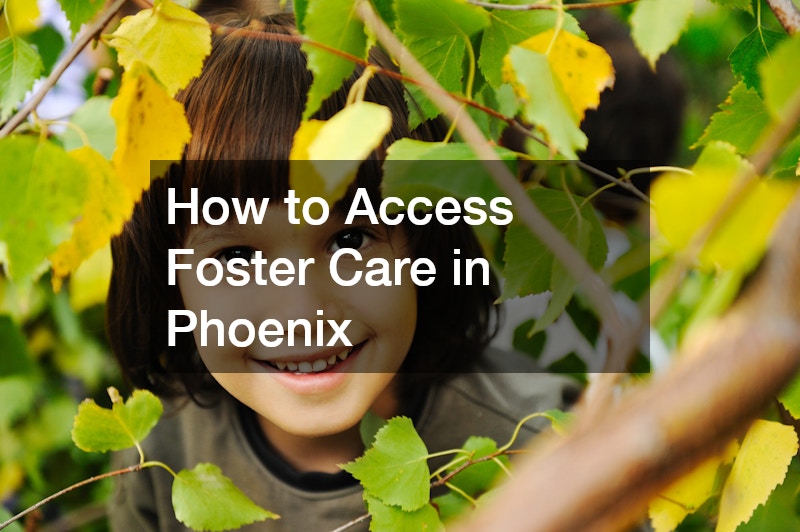Foster care is a vital service that provides temporary homes for children who cannot live with their biological families due to various circumstances, such as abuse, neglect, or family crises. In Phoenix, Arizona, accessing foster care can seem daunting, but understanding the steps involved can make the process smoother for prospective foster parents and children in need. Here’s a comprehensive guide on how to access foster care in Phoenix.
1. Understand the Foster Care System
Before diving into the process, it’s crucial to understand how the foster care system works.
Foster care is overseen by the Arizona Department of Child Safety (DCS), which is responsible for the welfare of children in the state. DCS works with licensed foster families to provide safe and nurturing environments for children in need. Familiarizing yourself with the terminology, procedures, and laws related to foster care will help you navigate the system more effectively.
2. Determine Your Eligibility
If you’re considering becoming a foster parent, the first step is to assess your eligibility. Generally, foster parents must meet the following criteria:
Age: You must be at least 21 years old.
Residency: You should be a resident of Arizona, with a stable home environment.
Background Checks: All adult household members must undergo background checks to ensure the safety of the children.
Financial Stability: While you don’t need to be wealthy, you must demonstrate the ability to provide for your family and the child’s basic needs.
3. Contact a Licensing Agency
In Arizona, foster parents are licensed through various agencies, including the DCS and private organizations. You can start by reaching out to your local DCS office or contacting private foster care agencies in Phoenix, such as:
Arizona’s Children Association
Christian Family Care Agency
Catholic Charities Community Services
These organizations provide information on the licensing process, training requirements, and support systems available for foster parents.
4. Complete Required Training
Once you choose an agency, you will be required to complete training sessions. These training programs cover topics such as child development, trauma-informed care, and behavior management strategies. The training helps prepare you for the challenges and responsibilities of foster parenting. Classes typically include both online modules and in-person sessions, culminating in a certification that is necessary for licensing.
5. Submit Your Application
After completing the required training, you’ll need to submit a formal application to become a foster parent. This application will include personal information, details about your household, and references. Be prepared to provide information about your work history, financial stability, and reasons for wanting to foster.
6. Undergo Home Studies
A home study is a critical component of the foster care licensing process. This assessment, conducted by a licensed social worker, evaluates your home environment, family dynamics, and overall readiness to become a foster parent. The social worker will visit your home, interview family members, and assess the safety and suitability of your living conditions. This process is designed to ensure that you can provide a stable and nurturing environment for a child.
7. Receive Your License
Once you have successfully completed the training and home study, your application will be reviewed, and you will receive your foster care license if approved. This process can take several weeks, so be patient as the agency processes your information.
8. Get Matched with a Child
After becoming a licensed foster parent, you will be able to receive placements. The matching process involves considering the needs of the child and your family’s abilities and preferences. Social workers will provide you with information about potential placements, including the child’s background, needs, and any special considerations.
9. Provide Ongoing Support and Care
Once you welcome a child into your home, your role as a foster parent becomes crucial. Providing a stable, loving environment is essential for the child’s emotional and physical well-being. Engage in open communication with the child’s caseworker, attend required meetings, and participate in family therapy or support groups as needed.
10. Consider the Long-Term Implications
Fostering can be a rewarding but challenging journey. It’s important to think about the long-term implications, including potential adoption or reunification with the biological family. Stay informed about your rights and responsibilities as a foster parent, and remain open to the emotional complexities that come with fostering a child.
